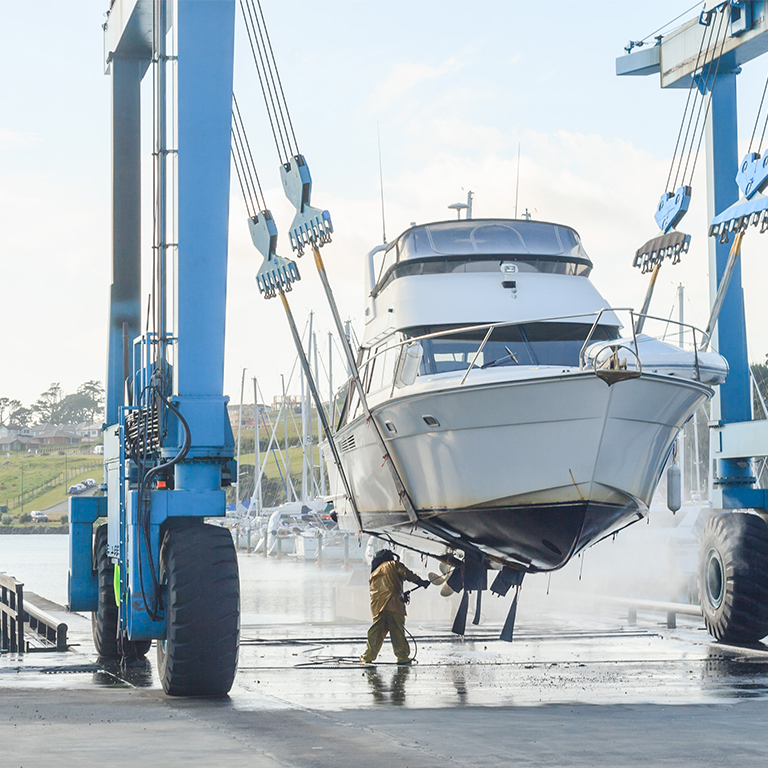If you’re planning to embark on your first offshore sailing trip, as well as packing essential provisions, there are some practicalities to take care of before setting sail. Here’s our guide to preparing for an extended passage.
Vessel maintenance
A good place to start is checking elements and systems. If your boat hasn’t had a professional rig check in the last couple of years, now is the time to arrange one. If you’re doing your own inspection, go up the mast and ensure everything is secure—check all rig fittings, cables, and connections. Examine the running rigging. If you discover any chafing, be sure to change the line.
As well as making sure all regular maintenance and routine services are up-to-date; engine servicing, freshwater filter changes etc., you can also carry out some of your checks:1
- Engine - check for overall corrosion and inspect the air filters and impeller.
- Battery - inspect the charge level, clean any connectors, or replace them if necessary.
- Fuel tank - look for any sign of water/contamination in the fuel tank, replace any cracked or old fuel hoses, check clamps for rust and ensure no vent blockages or leaks.
- Spark plugs - need frequent attention; this is the ideal time to check and replace them.
Communications
It goes without saying that it’s essential to test all communications before leaving the port.
If your route takes you a mile or so off the coast, you may need to rely on the Very High Frequency (VHF) to communicate and issue a distress call. However, your VHF signal can deteriorate over time, and electrical connections can become compromised. It’s worth carrying out a radio check by contacting the coastguard on the appropriate channel as part of your pre-departure checks.
All crew should have access to a step-by-step procedure on how to activate the VHF emergency system.
Passage planning
Drawing up a passage plan is a legal requirement under SOLAS V regulation 34, whatever the size of your vessel, you must make a plan before going to sea.2 You’ll need to consider the following when planning your cruise:
- Monitor the weather weeks before your planned departure.
- Determine the best weather window and route.
- Plot your waypoints and ensure they’re appropriate for the weather conditions.
- Sketch a detailed plan of your route intentions, including helpful information such as tide heights, VHF channels, courses, buoys, bearings and landmarks.
- Ensure there are numerous alternative ports to divert to if necessary.
It’s important to have a contingency plan including boltholes and locations to take refuge should conditions deteriorate, you encounter mechanical problems or a crew member is injured or becomes ill.
Remember, GPS isn’t a failsafe. Signal and accuracy are potentially vulnerable, and, just as with any electrical item, they can stop working. Always ensure you can navigate yourself to safety should the GPS fail. Knowing exactly where you are at all times is essential, and don’t forget to share your passage plan with the Coast Guard and a few family members or friends. Establish a check-in system and ensure family or friends have details on how to follow the tracker.
Safety Equipment:
- Review your safety equipment location list and check that all equipment is in good working order and where it should be.
- Check that all serviceable equipment is within service dates—if not, get them serviced.
- Give all crew members a tour of the safety equipment locations. Explain how the equipment is used and any associated procedures such as firefighting, Man Overboard, engine loss, loss of steering, taking on water, etc.
Crew arrangements
Assign lifejackets to the crew and ask them to fit them to their bodies, ensuring that all jackets have safety lines and tethers.
Insurance
Check you have the correct travel insurance in place and are adequately covered for sailing in coastal waters. Our expert team at Bishop Skinner Marine is here to help. We’ll discuss your sailing plans and arrange insurance protection that meets your needs.
In summary
When planning your passage, break it down into all the elements that could potentially pose a problem and prepare for each:3
- Weather forecast
- Tides
- Fuel consumption
- Boat limitations
- On-board safety equipment
- Navigational hazards and risks
- Crew experience and physical condition
- Essential boat maintenance equipment
- Necessary paperwork
- Provisions.
You can find out more about our sailing travel solutions here ‒ with options to buy online or receive advice from our expert team over the phone. Get in touch with our friendly team today.
Sources


